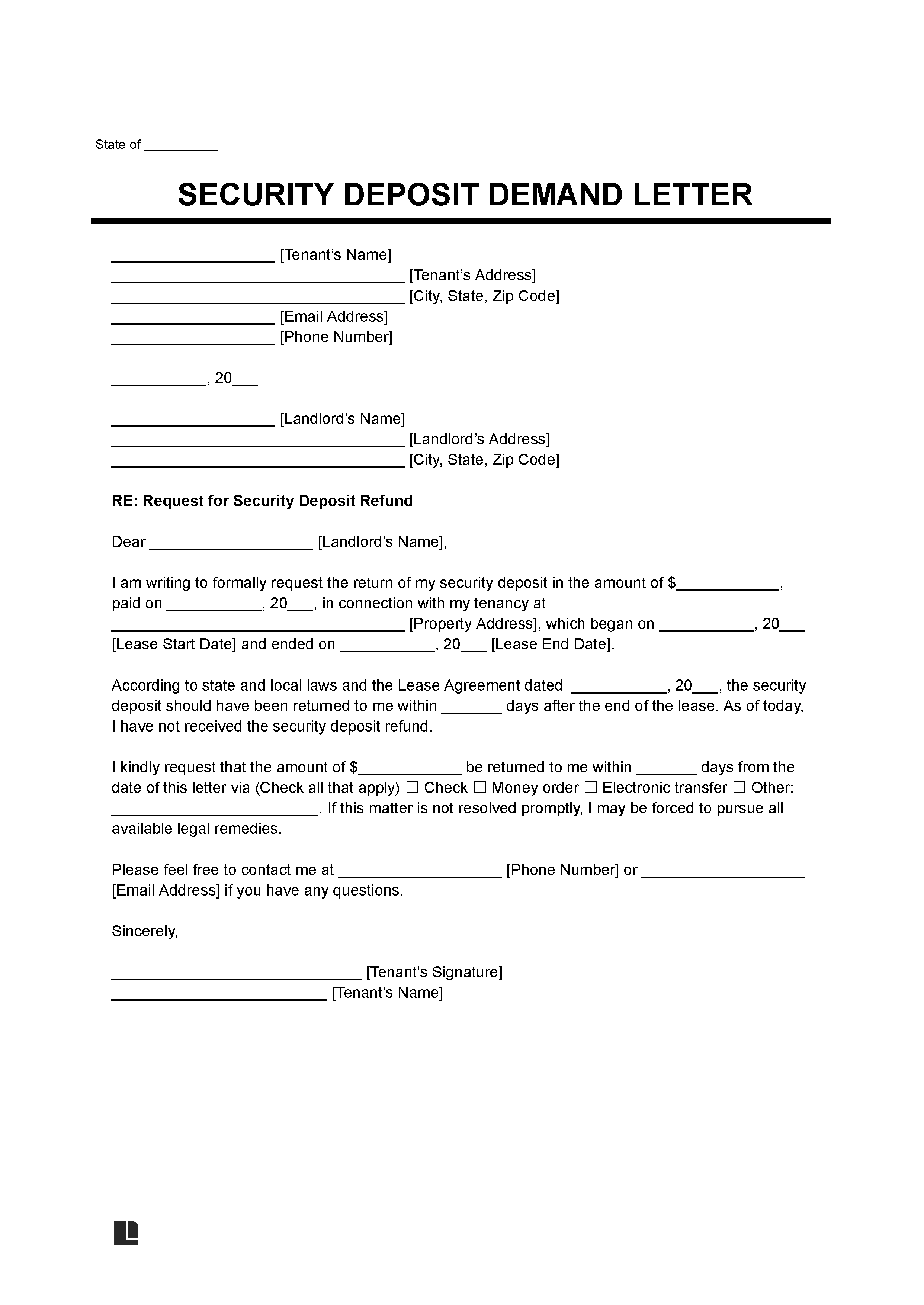A security deposit demand letter is a formal request from a tenant to a landlord for the return of the security funds. This document is essential for tenants who encounter challenges retrieving their funds, often due to misunderstandings or disputes. It acts as a structured method to communicate your rights as a tenant and to ask for the return of your money.
When to Use
- Facing difficulties getting your deposit back from the landlord
- After misunderstandings or disputes over the deposit
- When local laws entitle you to a return of your deposit within a specific timeframe after lease termination
- If there are unjustified or undocumented deductions from your deposit
- To formally communicate your rights as a tenant and request the return of your deposit
- After attempting informal communication with your landlord regarding the deposit return without success
Understanding Security Deposit Laws
How Much Can Be Charged?: The amount landlords can ask for a security deposit varies. Some states limit it to just a month or two of rent, while others don’t set a cap.
When Do You Get It Back? Depending on where you live, you can get your deposit back 14 to 60 days after your lease ends. A landlord should use a security deposit return letter to formally notify the tenant about the return of their security deposit.
What Can Be Deducted?: Common reasons for deductions include unpaid rent, damage beyond normal wear and tear, and cleaning costs. However, what’s considered “allowable” can differ by state.
Special Rules to Know: In some places, your deposit needs to be kept in a separate, interest-bearing account, and you might even get the interest once you move out.
Why This Matters: Whether you’re asking for your deposit back or handling one as a landlord, knowing these local laws helps ensure everything goes smoothly and fairly.
How to Write a Security Demand Letter
Follow this step-by-step guide to crafting an effective security deposit demand letter to ensure your rights as a tenant are clearly communicated and respected:
Step 1: Prepare Your Header
Start with the current date. Include your full name, current address, and contact details. Add the landlord’s name and address.
Step 2: Introduce Your Request
Open with a clear statement indicating the purpose of the letter is to demand the return of your security deposit. Mention the exact amount of the deposit.
Step 3: Detail the Lease Agreement
Provide the address of the rental property. Specify the lease agreement term, including the start and end dates. Reference any previous discussions regarding the return of the deposit.
Step 4: Cite Legal Grounds
Mention relevant state laws that support your demand for the deposit return. Highlight any legal obligations the landlord has regarding the return of the deposit.
Step 5: Outline Your Demands
Formally request the return of your deposit within a specified reasonable timeframe. If deductions were made, request an itemized list detailing these deductions. Include your preferred method for the deposit return.
Step 6: Mention Supporting Documentation
State that you’re including any relevant documentation, such as move-out inspection reports or photos, to support your request.
Step 7: Express Willingness to Resolve
Indicate your desire to resolve the issue amicably but mention your readiness to pursue further legal action if necessary.
Step 8: Conclude Your Letter
End with a respectful closing. Sign the letter.
Step 9: Send the Letter
Opt for certified mail or email with a read receipt to ensure there’s a record of delivery.
Sample Security Deposit Demand Letter
Below, you can download a template in PDF or Word format:
